Come celebrate the new Six to Celebrate! Wednesday, February 8- Metropolitan College of New York

Thursday, February 8, 2018
Metropolitan College of New York
60 West St, New York, NY 10006
| REGISTER |
Come celebrate the new Six to Celebrate! Wednesday, February 8- Metropolitan College of New York

Thursday, February 8, 2018
Metropolitan College of New York
60 West St, New York, NY 10006
| REGISTER |
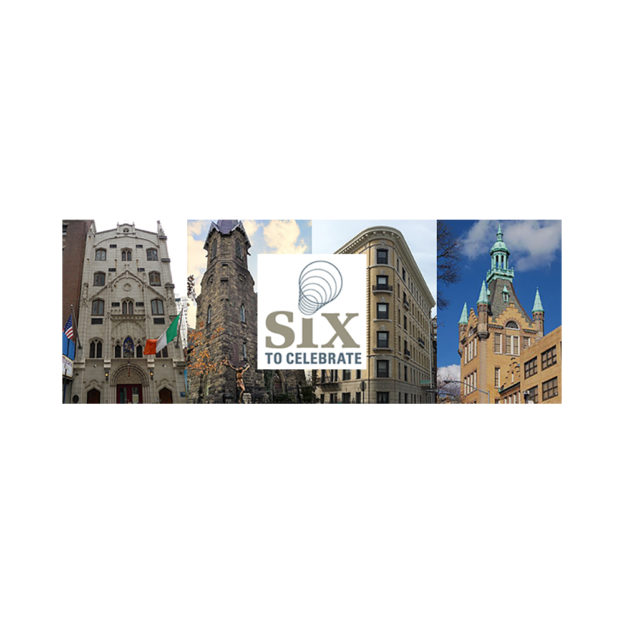

Six to Celebrate annually identifies six historic NYC neighborhoods that merit preservation. These will be priorities for HDC’s advocacy and consultation over a yearlong period.
Arthur Avenue, The Bronx
Arthur Avenue, the long-time home of The Bronx’s Little Italy, has been a haven for Italian-Americans, Italophiles and curious tourists seeking an authentic shopping and dining experience for generations. In a city that is constantly evolving, its family-run businesses offer consistency, quality and a connection to the past on a storied and historic street. To capture the essence of this place, the Belmont Business Improvement District will undertake a series of oral histories with key constituents and develop an official tour of the area. These place-making initiatives will serve to enhance the public’s experience of and appreciation for Arthur Avenue, as well as ensure that its history is not forgotten. The group also seeks to investigate zoning tools to protect the character and scale of the neighborhood.
Elmhurst, Queens
This community in western Queens boasts many charming, yet unprotected, residential, commercial and religious structures, as well as a number of historic burial grounds that are at risk of damage due to poor stewardship and lack of awareness. The Elmhurst History and Cemeteries Preservation Society, Inc., a newly-formed and first-of-its-kind civic organization in Elmhurst, is working to document the neighborhood’s treasures and pursue appropriate preservation tools to ensure their survival. In addition, the group is working to foster local pride in Elmhurst’s heritage through robust public programming, including walking tours and signage.
Lower West Side, Manhattan
Prior to the construction of the Brooklyn Battery Tunnel and the World Trade Center, the area from roughly Liberty Street to Battery Place west of Broadway was host to a vibrant immigrant neighborhood called the Lower West Side. Initially populated by Irish and German immigrants, it later became a Middle Eastern enclave (known as the “Syrian Quarter” or “Little Syria”) and was subsequently home to a large Slavic population. The area’s major redevelopment in the mid-20th century nearly wiped the neighborhood off the map, but several buildings still exist to tell the story, and the Friends of the Lower West Side is determined to make sure this history is not lost. The group will appeal to the New York City Landmarks Preservation Commission (LPC) to protect a small area of significance, as well as expand its oral history program, publish a written history and offer walking tours to raise awareness.
Prospect Heights Apartment House District, Brooklyn
Constructed on a lost fragment of the original footprint of Prospect Park, now in southern Prospect Heights, is a concentration of 82 apartment buildings dating from 1909-1929. This development, boasting a cohesive design vocabulary and scale, was promoted by the Prospect Park Commissioners to attract high quality construction to complement the nearby Park, Brooklyn Museum, Brooklyn Botanic Garden and Brooklyn Public Library. The buildings, representative of a period in Brooklyn history when building patterns shifted to accommodate a rising middle class, remain exemplary for their architectural integrity and as housing stock for a diverse population. The Prospect Heights Neighborhood Development Council and the Cultural Row Block Association on Eastern Parkway are working to garner local support and submit a proposal for historic district status from the LPC.
Westchester Square, The Bronx
Westchester Square, now a major transportation hub in the northeast Bronx, was once home to a critical location in the birth of our nation. Hidden in plain sight, sites such as Saint Peter’s Episcopal Church and the Westchester Creek were crucial to American victory in the Revolutionary War. Other sites such as the Huntington Library and above-ground subway station serve as vestiges of the early 20th century innovation and architectural character that continue to anchor the neighborhood today. The Westchester Square Business Improvement District is working to rebrand the area with a focus on its rich history. This public awareness campaign will involve formally documenting its history and commemorating important events through the installation of plaques in and around the Square.
Cultural Landmarks, Citywide
Working in partnership with the New York Preservation Archive Project and the NYC LGBT Historic Sites Project, HDC will undertake a campaign to shine a light on sites of cultural significance throughout the five boroughs. In recent years, the LPC has designated several landmarks based largely on their cultural impact and has expressed that such designations are a priority for the agency. Through the formation of a diverse coalition of stakeholders, HDC hopes to broaden the conversation about preservation tools for culturally significant sites and to create an action plan for their proper stewardship.



Support for Six to Celebrate is provided in part by public funds from the New York City Department of Cultural Affairs in partnership with the City Council and by the New York State Council on the Arts with the support of Governor Andrew Cuomo and the New York State Legislature. Additional support is provided by New York City Council Members Margaret Chin, Daniel Garodnick, Vincent Gentile, Corey Johnson, Ben Kallos, Peter Koo and Stephen Levin.


Six to Celebrate annually identifies six historic NYC neighborhoods that merit preservation. These will be priorities for HDC’s advocacy and consultation over a yearlong period.
Arthur Avenue, The Bronx
Arthur Avenue, the long-time home of The Bronx’s Little Italy, has been a haven for Italian-Americans, Italophiles and curious tourists seeking an authentic shopping and dining experience for generations. In a city that is constantly evolving, its family-run businesses offer consistency, quality and a connection to the past on a storied and historic street. To capture the essence of this place, the Belmont Business Improvement District will undertake a series of oral histories with key constituents and develop an official tour of the area. These place-making initiatives will serve to enhance the public’s experience of and appreciation for Arthur Avenue, as well as ensure that its history is not forgotten. The group also seeks to investigate zoning tools to protect the character and scale of the neighborhood.
Elmhurst, Queens
This community in western Queens boasts many charming, yet unprotected, residential, commercial and religious structures, as well as a number of historic burial grounds that are at risk of damage due to poor stewardship and lack of awareness. The Elmhurst History and Cemeteries Preservation Society, Inc., a newly-formed and first-of-its-kind civic organization in Elmhurst, is working to document the neighborhood’s treasures and pursue appropriate preservation tools to ensure their survival. In addition, the group is working to foster local pride in Elmhurst’s heritage through robust public programming, including walking tours and signage.
Lower West Side, Manhattan
Prior to the construction of the Brooklyn Battery Tunnel and the World Trade Center, the area from roughly Liberty Street to Battery Place west of Broadway was host to a vibrant immigrant neighborhood called the Lower West Side. Initially populated by Irish and German immigrants, it later became a Middle Eastern enclave (known as the “Syrian Quarter” or “Little Syria”) and was subsequently home to a large Slavic population. The area’s major redevelopment in the mid-20th century nearly wiped the neighborhood off the map, but several buildings still exist to tell the story, and the Friends of the Lower West Side is determined to make sure this history is not lost. The group will appeal to the New York City Landmarks Preservation Commission (LPC) to protect a small area of significance, as well as expand its oral history program, publish a written history and offer walking tours to raise awareness.
Prospect Heights Apartment House District, Brooklyn
Constructed on a lost fragment of the original footprint of Prospect Park, now in southern Prospect Heights, is a concentration of 82 apartment buildings dating from 1909-1929. This development, boasting a cohesive design vocabulary and scale, was promoted by the Prospect Park Commissioners to attract high quality construction to complement the nearby Park, Brooklyn Museum, Brooklyn Botanic Garden and Brooklyn Public Library. The buildings, representative of a period in Brooklyn history when building patterns shifted to accommodate a rising middle class, remain exemplary for their architectural integrity and as housing stock for a diverse population. The Prospect Heights Neighborhood Development Council and the Cultural Row Block Association on Eastern Parkway are working to garner local support and submit a proposal for historic district status from the LPC.
Westchester Square, The Bronx
Westchester Square, now a major transportation hub in the northeast Bronx, was once home to a critical location in the birth of our nation. Hidden in plain sight, sites such as Saint Peter’s Episcopal Church and the Westchester Creek were crucial to American victory in the Revolutionary War. Other sites such as the Huntington Library and above-ground subway station serve as vestiges of the early 20th century innovation and architectural character that continue to anchor the neighborhood today. The Westchester Square Business Improvement District is working to rebrand the area with a focus on its rich history. This public awareness campaign will involve formally documenting its history and commemorating important events through the installation of plaques in and around the Square.
Cultural Landmarks, Citywide
Working in partnership with the New York Preservation Archive Project and the NYC LGBT Historic Sites Project, HDC will undertake a campaign to shine a light on sites of cultural significance throughout the five boroughs. In recent years, the LPC has designated several landmarks based largely on their cultural impact and has expressed that such designations are a priority for the agency. Through the formation of a diverse coalition of stakeholders, HDC hopes to broaden the conversation about preservation tools for culturally significant sites and to create an action plan for their proper stewardship.



Support for Six to Celebrate is provided in part by public funds from the New York City Department of Cultural Affairs in partnership with the City Council and by the New York State Council on the Arts with the support of Governor Andrew Cuomo and the New York State Legislature. Additional support is provided by New York City Council Members Margaret Chin, Daniel Garodnick, Vincent Gentile, Corey Johnson, Ben Kallos, Peter Koo and Stephen Levin.
Apply today to become one of the 2018 Six to Celebrate groups.
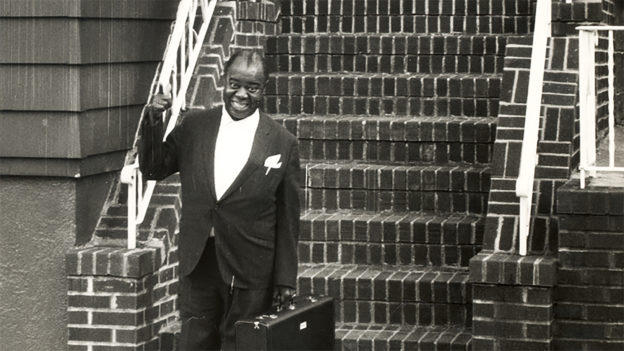
Corona-East Elmhurst Walking Tour
Saturday, June 10, 2017
11am-1pm
Corona-East Elmhurst has become one of the largest and most intercultural Latino communities in NYC. Originally part of the colonial village of Newtown, established in the 1600s by Dutch and African settlers, it has been home over the years to sizable Italian, African-American, Caribbean, German, Irish, Jewish and Swedish populations simultaneously. It also has a history as a horse-racing destination, a railroad and baseball town and a haven for New York’s jazz community. On this two-hour tour we will explore these aspects of Corona-East Elmhurst’s heritage, concentrating on the Corona portion of this diverse area. Sights include historic houses of worship, a 19th-century country villa, beloved local parks and eateries and the longtime home of music legend Louis Armstrong, as well as the former residence of his friend and fellow legend Dizzy Gillespie, who along with Charlie Parker ushered the era of bebop into the American jazz tradition. Tour participants will have the option of extending their tour by continuing with the guide to the World’s Fair Marina, a waterfront promenade where the mysterious Candela structures stand.

Friday, May 5, 2017
6 – 8pm
While many people are familiar with the area between 14th and 23rd streets in the west side of Manhattan as the heart of Chelsea, many are not so familiar with Chelsea’s northern portion above 23rd Street. In recent years losses of architecturally and historically significant structures in this northern part of Chelsea have been cause for alarm.
What was once largely a wholesale district and extension of the garment district and area of lower cost commercial loft spaces has seen a dramatic increase in residential conversions and new construction as well as an influx of new businesses, non-profits and cultural groups. While a small historic district has been created to honor New York’s abolitionist past, historic Tin Pan Alley and other historic resources and architecture in the area remain largely unprotected.
This walk, conducted by members of Save Chelsea one of the Historic Districts Council Six to Celebrate for 2017 covers the area between West 23rd and 30th Streets. — where changes over the past decade have transformed a once-thriving wholesale and commercial loft district into a land of increasing residential and office density. Armed with a knowledge of zoning reform, infrastructure investment, and the areas significant African American, French and grand theatrical past, Save Chelsea leads this the two-hour foot tour — taking into account not just the area’s rich history, but the practical requirements of ensuring the integrity of unprotected locations such as historic Tin Pan Alley.
FREE
Tour starts in front of 167 West 23rd Street ( Landmark Liquors) and terminates on 9th Avenue in the low 20’s.
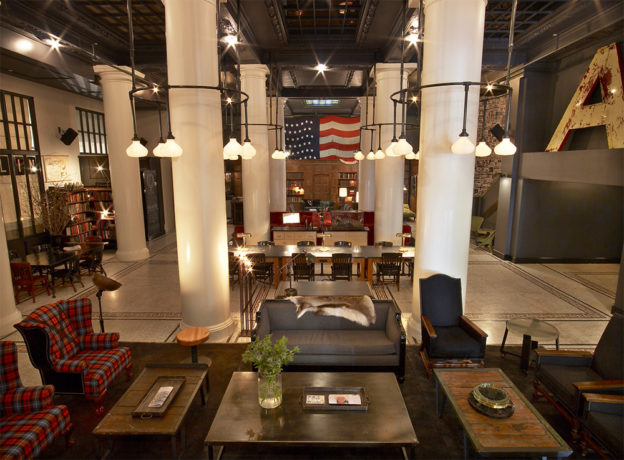
Friday, May 5
2:20 pm
Attendees of this unique tour will get to view the Ace Hotel located in the Madison Square North Historic District, and tour Madison Square Park. You will learn how the park affected development around Madison Square and how the hotel is a part of that history. The Ace hotel has embraced its historic roots by creatively decorating its interior with contemporary pieces that reflect the neighborhoods past. The tour will begin inside the lobby of the Ace hotel, where a staff member will guide us around the the original mosaic floor and stained glass windows. The tour will then continue through Madison Square Park. The land around Madison Sq. Park was designated a public space in the first city charter of 1686; in the ensuing centuries the land would be used as farmland, military training and finally a park. Come learn the storied history of the park and the neighborhood on this special Six to Celebrate tour.
HDC now has a Six to Celebrate app! All the amazing information in the walking tour brochures is now available right on your phone (or tablet). You can learn about the history of each Six to Celebrate neighborhood along with additional information about specific sites within each neighborhood. Now all you have to do is take out your phone and you can impress everyone with your knowledge about NYC history.
The app is free and available for Apple IOS and Andriod OS
Calvary-St. George’s Parish
61 Gramercy Park North, Manhattan
6pm
Friends $20 / General Admission $25
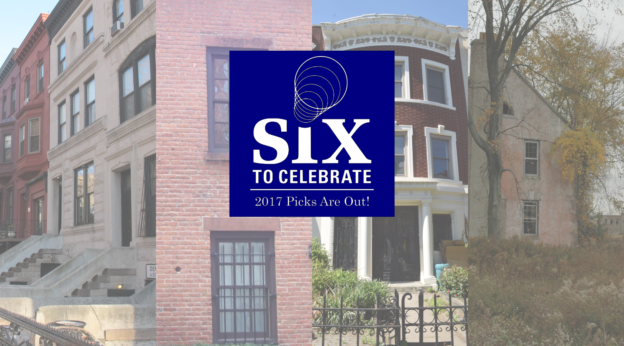
Calvary-St. George’s Parish
61 Gramercy Park North, Manhattan
Wednesday, February 15, 2017
6pm
Friends $20 / General Admission $25
Corona-East Elmhurst, Queens
Prospect-Lefferts Gardens, Brooklyn
Six to Celebrate annually identifies six historic NYC neighborhoods that merit preservation. These will be priorities for HDC’s advocacy and consultation over a yearlong period. Please join the Historic Districts Council at the 2017 launch party!
To read more about the 2017 Six to Celebrate go to our website 6tocelebrate.org
Support is provided in part by public funds from the New York City Department of Cultural Affairs in partnership with the City Council and by the New York State Council on the Arts and the New York State Office of Parks, Recreation and Historic Preservation with the support of Governor Andrew Cuomo and the New York State Legislature. Additional support is provided by City Council Members Margaret Chin, Inez Dickens, Daniel Garodnick, Vincent Gentile, Corey Johnson, Ben Kallos, Stephen Levin, Mark Levine, Rosie Mendez and Rafael Salamanca, and by New York State Assembly Members Deborah Glick, Richard Gottfried and Daniel O’Donnell.

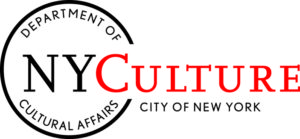

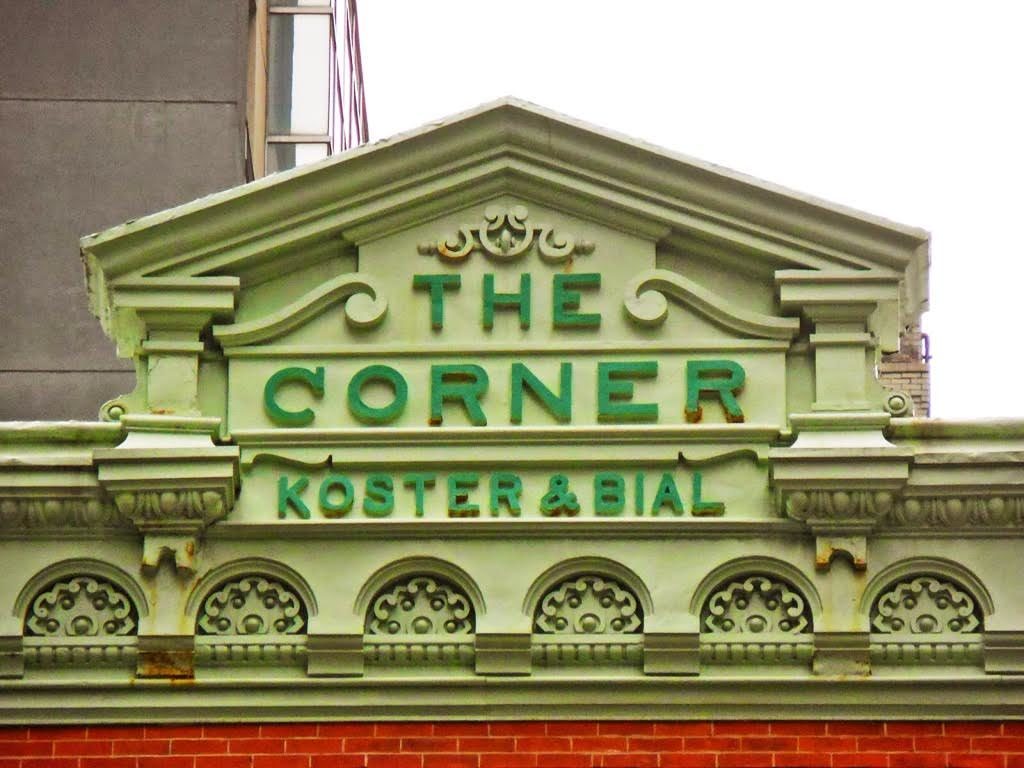
Chelsea, Manhattan
Encompassing the area from West 14th to West 30th Streets and the Hudson River to Sixth Avenue, Chelsea boasts residential and commercial architecture spanning roughly 200 years of New York City’s history. While there are three designated Historic Districts in the area, the safety of the buildings under the Landmarks Preservation Commission’s (LPC) purview has been called into question due to a number of deleterious projects approved by the agency in recent years. Through robust public programming and outreach, Save Chelsea is positioning itself as a neighborhood watchdog to foster civic awareness. By galvanizing widespread support for historic preservation and continuing its work to document undesignated historic buildings in Rose Hill and the Flower District, the group also hopes to lobby for further protections in the area.
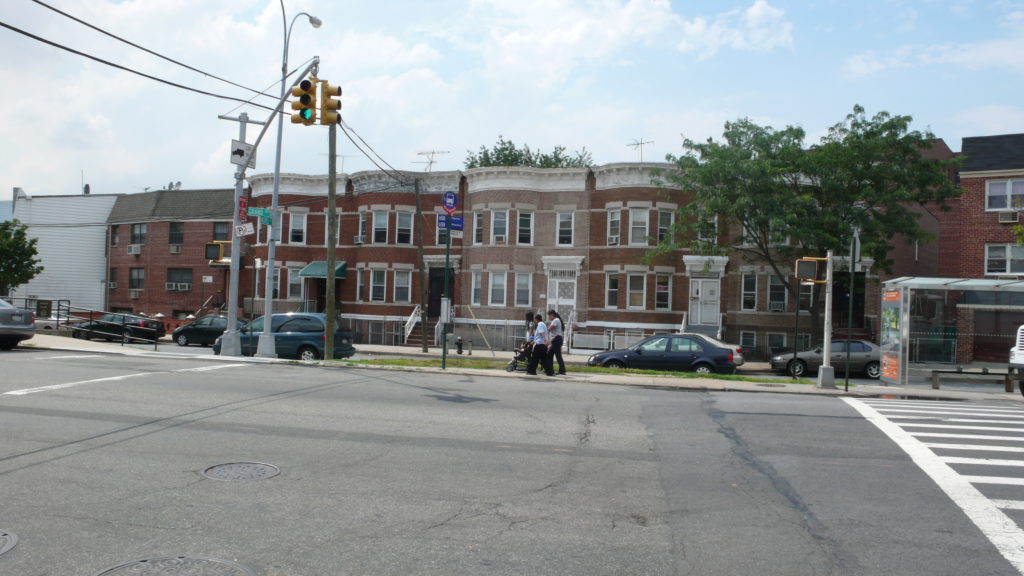
Corona-East Elmhurst, Queens
The sister communities of Corona and East Elmhurst are known for their richly diverse populations and roster of influential residents, some of whose homes still stand. Rapid redevelopment and a lack of public awareness have resulted in the loss of many culturally significant sites in Corona-East Elmhurst. To encourage interest on the part of the local community and to make those community members’ voices heard, the Corona-East Elmhurst Historic Preservation Society is working to make historic memorabilia and artifacts accessible to the public and to grow its organizational capacity in order to reach broader audiences and share information about the vibrant cultural history of the area.
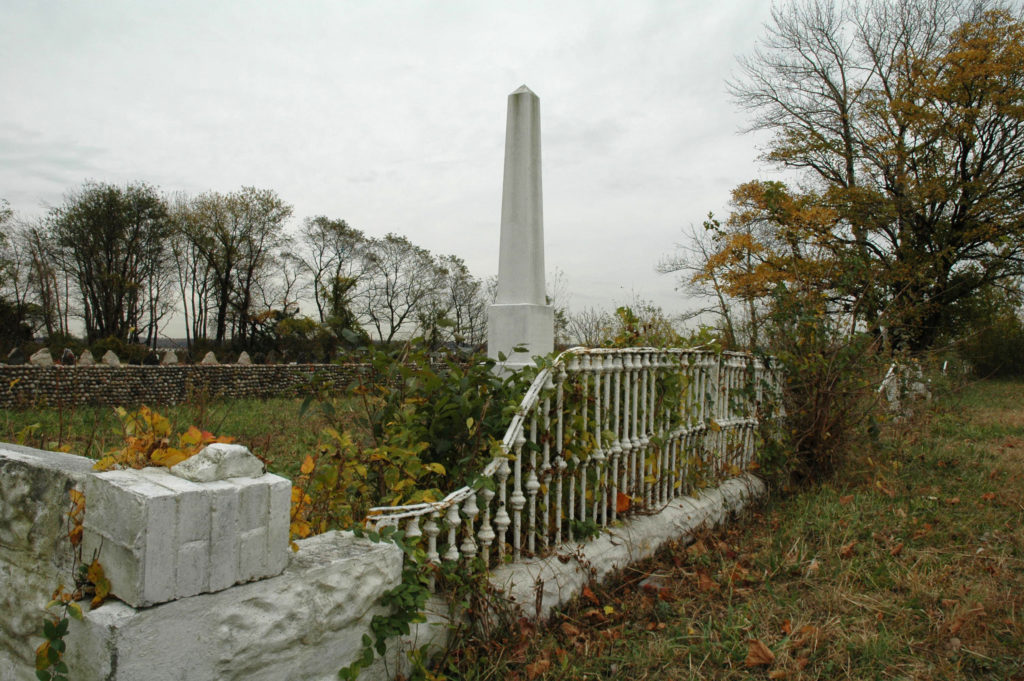
Hart Island, The Bronx
Unbeknownst to many, the largest public cemetery in the United States lies within the Long Island Sound just a stone’s throw from City Island in The Bronx. In existence since the Civil War era, over one million people are buried on Hart Island, but visitation is strictly limited, thus keeping the island shrouded in mystery. Working to uncover its historic significance, The Hart Island Project formed in 1991, incorporated in 2011 and has made immense progress to provide awareness, access, burial records and maps. In addition to advocating for public access and, ultimately, to transform the island into a park, the group is also working to illuminate the island’s history through public programming and a nomination to the National Register of Historic Places.
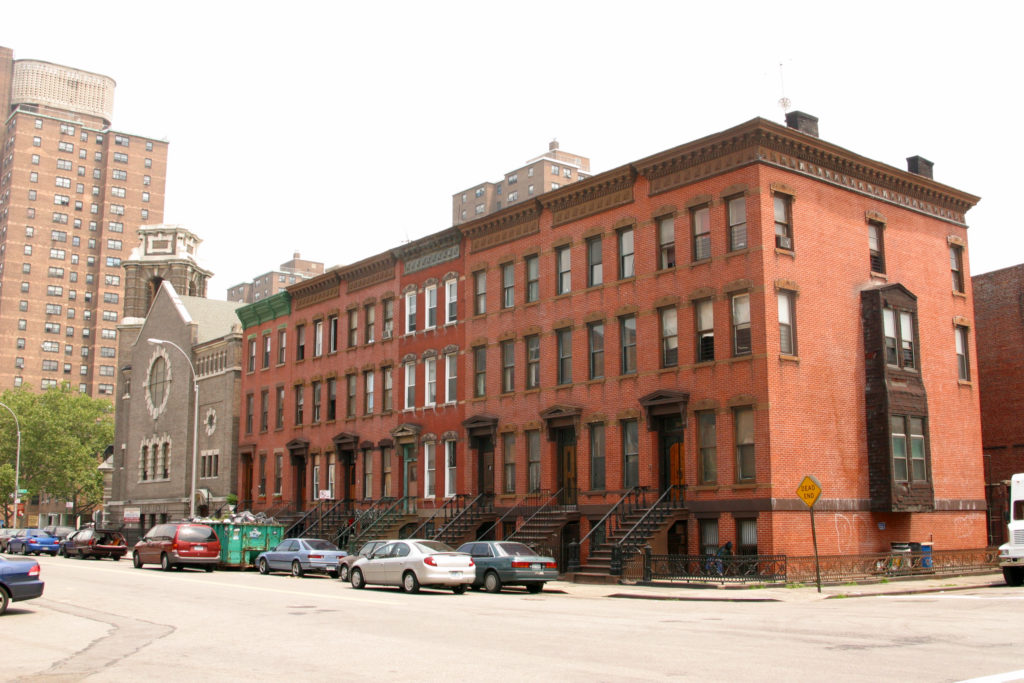
Mott Haven, The Bronx
After decades of neglect, investors and developers have turned their gaze toward Mott Haven, and tourism and business has followed. The neighborhood has three designated Historic Districts: Mott Haven, Mott Haven East and the Bertine Block, all of which boast beautiful and intact rowhouses, as well as houses of worship. To celebrate the historic and architectural contributions of the neighborhood and explore the powerful role they play in the future of the area, the Mott Haven Historic Districts Association formed in 2016 to ensure that long-term residents (and buildings) have an active, inclusive stake in the neighborhood’s renaissance. The group will launch an annual “Decorators’ Showhouse,” host walking tours and establish a strong organizational presence in the neighborhood to cultivate stewardship, foster conscious citizenship and guide new investment sensitively to this gem in the South Bronx.
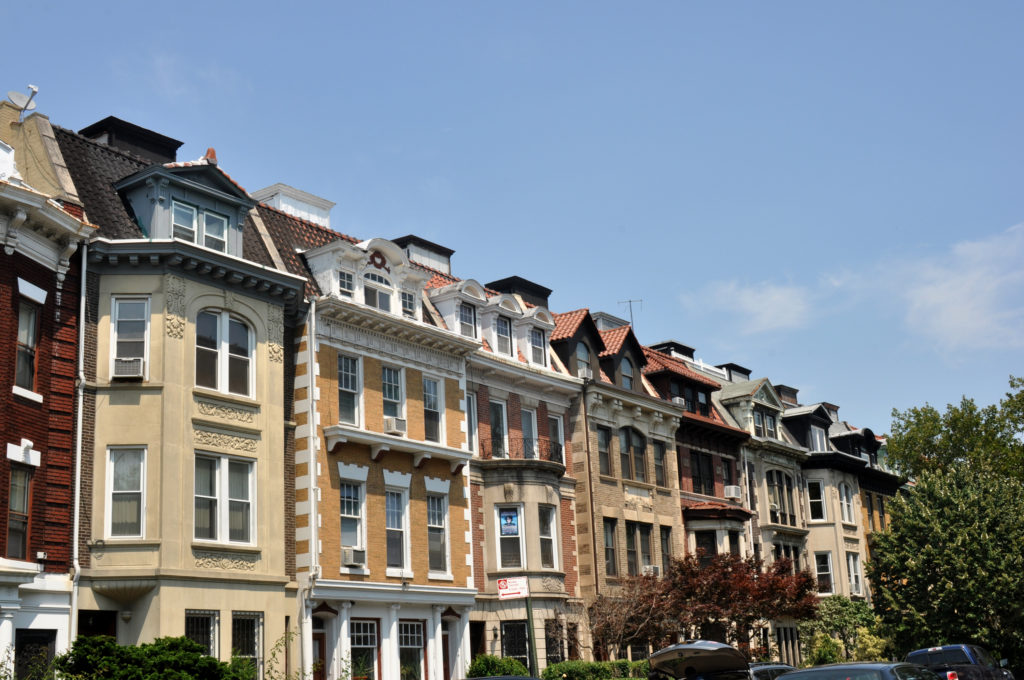
Prospect-Lefferts Gardens, Brooklyn
The Prospect Lefferts Gardens Heritage Council, the Parkside Avenue Block Association, and Concerned Citizens for Community Based Planning have worked to give residents a voice about current rapid development that has left this neighborhood with an unprecedented number of demolitions. With only one, small historic district and a much higher-density zoning that is ill-suited to the existing built environment, Prospect-Lefferts Gardens is rapidly changing in scale, character and identity due to rowhouses and other smaller buildings being replaced by speculative, high-rise, “luxury” development. Residents have begun to document and make the case for the preservation of portions of their unprotected historic neighborhood before it disappears forever.
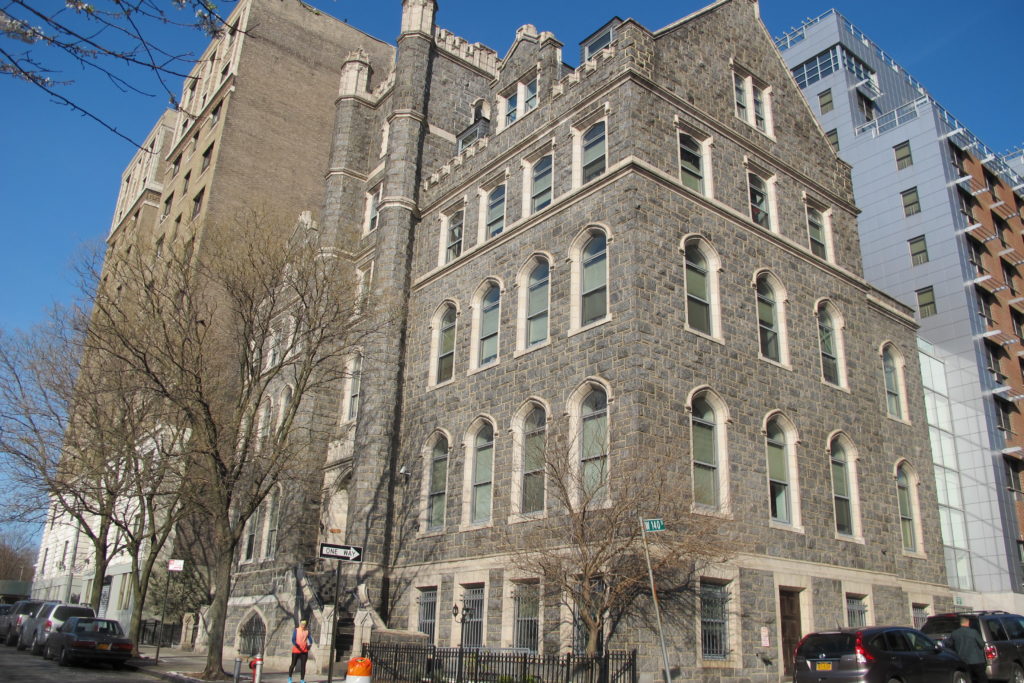
West Harlem, Manhattan
Displaying a rich variety of historically, culturally and architecturally significant buildings, West Harlem is home to late 19th century rowhouses, grand apartment buildings, theaters and religious structures designed by some of the leading architects of their time. Speculative development and rising real estate values have left the neighborhood at risk of losing some of the character that makes it a desirable and dynamic community in which to live and work. The West Harlem Community Preservation Organization is formulating a proposal to the LPC to expand the Hamilton Heights/Sugar Hill Historic District by surveying historic buildings, creating an outreach system to the local community and hosting workshops and other public programs.
Support is provided in part by public funds from the New York City Department of Cultural Affairs in partnership with the City Council and by the New York State Council on the Arts and the New York State Office of Parks, Recreation, and Historic Preservation with the support of Governor Andrew Cuomo and the New York State Legislature. Additional support is provided by City Council Members Ben Kallos, Rosie Mendez, Mark Levine, Inez Dickens, Vincent Gentile, Corey Johnson, Stephen Levin, Margaret Chin, Dan Garodnick, and Rafael Salamanca and New York State Assembly Members Deborah Glick, Richard Gottfried, and Daniel O’Donnell.
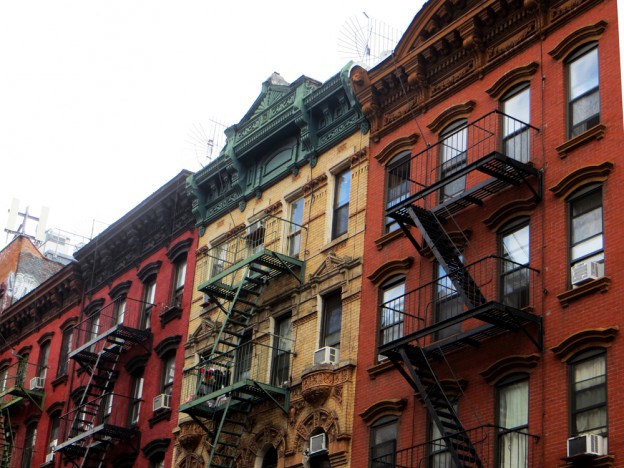
Saturday, September 24, 11:00AM: East New York
Following up on the success of our first tour of East New York in the spring, HDC is pleased to offer a repeat tour of this fascinating corner of Brooklyn! East New York has certainly been the talk of the town lately, as the City moves forward to rezone the neighborhood, along with 14 others. However, East New York is also known for its rich and somewhat troubled history. Join us for this tour, led by Farrah Lafontant, neighborhood resident and member of Preserving East New York, the newly formed civic group working to preserve the neighborhood’s built heritage. The tour will begin at the 75th Police Precinct Station and include visits to a Magistrates Court, the former site of the East New York Savings Bank, Maxwell’s Bakery and the Borden Dairy Company factory complex, which was recently heard by the Landmarks Preservation Commission for potential landmark status.
After the tour we will head to Arts East New York for a reception. The party will allow neighbors to learn more about PENY and the work they are doing in East New York. The party is free and open to the public, you do not have to attend the tour to attend the party.
Sunday, October 30, 11:30AM: Clay Avenue & Grand Concourse
Join us for a tour highlighting two very different historic districts in The Bronx! We will begin with a stroll through the charming Clay Avenue Historic District, a one-block stretch of remarkably intact and refreshingly unchanged rowhouses. Following this treasure of a block, the tour will loop back to the Grand Concourse Historic District to take in a smattering of Revival and Art Deco apartment buildings. This juxtaposition of small-scale, late 19th century rowhouses and large-scale, early 20th century apartment buildings will allow participants to compare and contrast trends in the development of middle-class housing a generation or so apart. The tour will end at another locally designated gem, the Andrew Freedman Home, located on the Grand Concourse at East 166th Street. The home has a colorful and unlikely origin story, having been built by millionaire philanthropist Andrew Freedman as a retirement facility for wealthy people who had lost their fortunes.
Sunday, October 30, 2:00PM: East River Vistas: Architecture and Changing Lifestyles in Yorkville
Once home to bucolic farmland, the eastern edge of Yorkville was dotted with clapboard farmhouses and country houses before being transformed into an industrial factory hub at the turn of the 20th century. As immigrants settled in Yorkville, tenement buildings were constructed, and by the 1930s the area around East End Avenue was home to luxury apartments designed by elite architects. Join the Historic Districts Council and FRIENDS of the Upper East Side Historic Districts as we track this fascinating history of housing in eastern Yorkville with architectural historian and famed tour guide, Francis Morrone. Highlights will include East End Avenue, Gracie Square and Carl Schurz Park, model tenements such as the Cherokee Apartments, the idyllic rowhouses at Henderson Place and everything in between, including the largest white brick high-rise in the universe!
SOLD OUT
Support is provided in part by public funds from the New York City Department of Cultural Affairs in partnership with the City Council and by the New York State Council on the Arts and the New York State Office of Parks, Recreation, and Historic Preservation with the support of Governor Andrew Cuomo and the New York State Legislature. Additional support is provided by City Council Members Ben Kallos, Rosie Mendez, Mark Levine, Inez Dickens, Vincent Gentile, Corey Johnson, Stephen Levin, Margaret Chin, Dan Garodnick, and Rafael Salamanca and New York State Assembly Members Deborah Glick, Richard Gottfried, and Daniel O’Donnell.
![]()
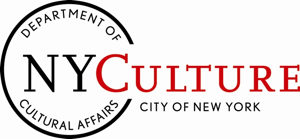
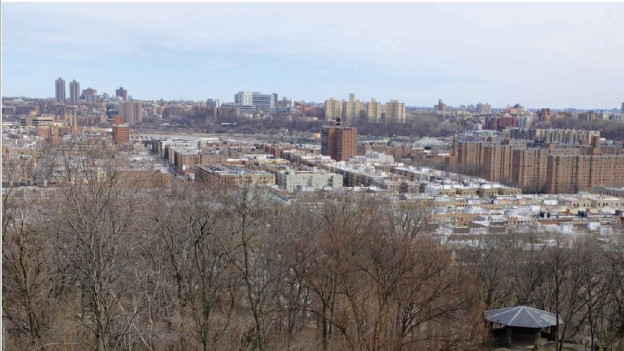

Proposed 23-story tower from Ft. Tryon Park. 4650 Broadway visibility study by Saratoga Associates
The Historic Districts Council chose Inwood as one of the Six to Celebrate neighborhoods in 2011 for its historical, architectural and environmental attributes. Nearly half of the land in Inwood is public park space which preserves natural terrain and geological features of Manhattan, as opposed to the designed landscapes of many parks in New York City. Thus, Inwood’s distinctive development pattern and architecture was created in relation to the original landscape of Manhattan Island.
One of Inwood and Washington Heights’ treasured historical resources is Fort Tryon Park, a 67-acre park which is listed on the National Register of Historic Places and is one of only ten Scenic Landmarks in all of New York City. Designed by Frederick Law Olmsted, Jr. the park’s landscape is unrivaled in its romantic views of the Hudson River, the Palisades, and its rich topography.
However, the super-tall development found in other parts of the city has arrived above 200th Street in Manhattan in this low-scale neighborhood. Ft. Tryon Park and the Inwood community is currently threatened by two rezonings which will irreversibly alter the experience of the park and the neighborhood at large. The proposed rezoning for 4650 Broadway will be a 27-story building abutting the park, four times taller than the surrounding buildings’ heights. The other proposal, 4566 Broadway, would allow a 19-story development (increase in FAR from 3.44 to 9.96).
Click here to send a letter saying “NO” to spot-rezoning and require an Environmental Impact Study (EIS) of the cumulative impacts of these projects, and undertake a comprehensive plan to develop appropriately scaled development, similar to the City’s InwoodNYC plan immediately to the north.
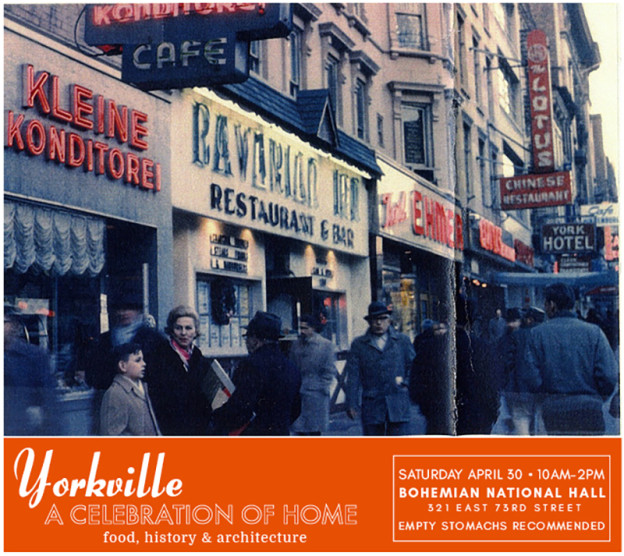

Scenes of Yorkville’s past (NYPL)
What was it like to live in Yorkville when 86th Street was known as German Broadway, when the smell of hops from the Ruppert and Ehret’s breweries filled the air, and when a stop at Paprika Weiss on 82nd Street preceded daily exercise at Sokol Hall? FRIENDS and the Historic Districts Council will celebrate Yorkville’s past while highlighting places that still offer a glimpse into this area’s rich immigrant history. The symposium will feature panels on Yorkville life and architecture, and cuisine from some of the neighborhood’s storied establishments.
Saturday, April 30th
10:00 a.m.
Bohemian National Hall
321 East 73rd Street
$15 friends / members, $20 non-members
To register, click here.
Performance by the Czech puppetry demonstration with the Czech American Marionette Theatre
Speakers include:
Majda Kallab Whitaker – Independent scholar and cultural historian contributing to the development of the Dvořák Room at Bohemian National Hall, a Board Member of the Dvořák American Heritage Association and the Bohemian Benevolent & Literary Association
Alexandra Kelly – Manager of Outreach Services and Adult Programming at the New York Public Library, and developer and director of the NYPL’s Community Oral History Project
Edward Kasinec – Born and reared in the post-war Czech, Slovak and Rusyn communities of Yorkville, serves as a Research Scholar at the Harriman Institute, Columbia University and since 2015 as Visiting Fellow at the Hoover Institution, Stanford University
Thomas Pryor – A native Yorkville resident, storyteller and author of I Hate the Dallas Cowboys – tales of a scrappy New York boyhood
Peter Walsh – Longtime Irish resident of Yorkville, writer, and musician
Irene Mergl – A lifelong Yorkville resident and member of the Sokol Hall, where she serves as 1st Vice President and Historian
Vít Hořejš – Co-founder of the Czechoslovak-American Marionette Theatre, who showcases traditional Czech marionettes, many of which were discovered in Yorkville’s Jan Hus Presbyterian Church
Gregory Dietrich – preservation consultant and proprietor of Gregory Dietrich Preservation Consulting, graduate of Columbia University’s Historic Preservation program, and an Advisor to the Historic Districts Council
Co-Sponsored by the Friends of the Upper East Side Historic Districts
 This program is supported, in part, by public funds from the New York City Department of Cultural Affairs in partnership with the City Council and Council Member Benjamin Kallos.
This program is supported, in part, by public funds from the New York City Department of Cultural Affairs in partnership with the City Council and Council Member Benjamin Kallos.
Introducing the 2016 Six to Celebrate!
Six to Celebrate annually identifies six historic NYC neighborhoods that merit preservation. These will be priorities for HDC’s advocacy and consultation over a yearlong period.
To honor our new Six to Celebrate we will be hosting a party at the South Street Seaport Museum’s Melville Gallery at 213 Water Street on January 28th at 6 pm!
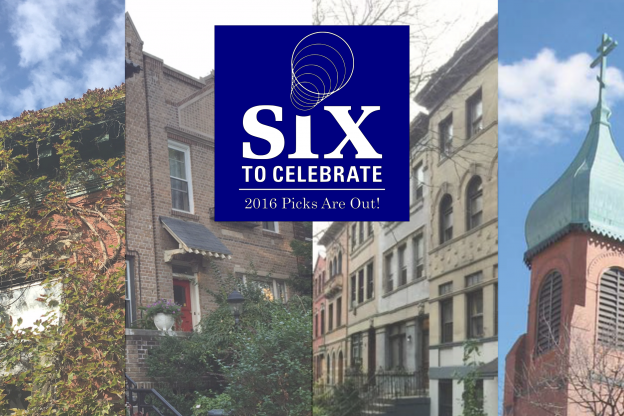
Introducing the 2016 Six to Celebrate!
Six to Celebrate annually identifies six historic NYC neighborhoods that merit preservation. These will be priorities for HDC’s advocacy and consultation over a yearlong period.
To honor our new Six to Celebrate we will be hosting a party at the South Street Seaport Museum’s Melelville Gallery at 213 Water Street on January 28th at 6 pm!
Audubon Park, Manhattan

When the Audubon Park Historic District, characterized by large apartment buildings dating to the early 20th century, was designated in 2009, 626-648 West 158th Street was unfortunately left out. These 12 rowhouses were built earlier than the rest of the district, thus representing an earlier phase of development and an alternative vision of how the area should be developed as transit moved northward at the turn of the 20th century. The Riverside Oval Association is compiling a request for evaluation to the Landmarks Preservation Commission (LPC) to expand the historic district to protect this deserving row.
Clay Avenue, The Bronx

The Clay Avenue Historic District encompasses both blockfronts on Clay Avenue between East 165th and 166th Streets in the Morrisania section of the Bronx. The block sits on land that had previously been a horseracing track called Fleetwood Park, and its residential buildings were the earliest to be constructed on the property. In recent decades, economic disinvestment has plagued the block, but local residents are working, under the name Clay Avenue Historic District, to improve public safety, encourage building restoration, and cultivate support for neighborhood beautification.
Crown Heights South, Brooklyn

In response to rapid changes in Crown Heights South and the successful preservation efforts of their neighbors in Crown Heights North, the Crown Heights South Association formed in 2015 to work toward a similar success story. Crown Heights South is characterized by its charming rows of early 20th century houses, stately apartment buildings, and the imposing Bedford Union Armory serving as a grand anchor. The group will survey and document the area, perform community outreach, and compile a request for evaluation to the LPC for landmarks and historic district consideration.
East New York, Brooklyn

Unveiled in 2015, the city’s East New York Community Plan to rezone sections of East New York and Cypress Hills for mandatory affordable housing has left many wondering about the neighborhood’s historic resources. A new group, Preserving East New York, has formed to tackle this issue and to advocate for planning that includes the protection, restoration, and reuse of some of the area’s treasured buildings. The group will identify and highlight endangered structures, build community support for their preservation, and work with the city to protect them.
Richmond Hill, Queens

One of the first planned communities in New York City, Richmond Hill has a strong sense of place that is most noted for its wood-frame, Queen Anne style houses. The Richmond Hill Historical Society has led the effort to preserve portions of the neighborhood for decades, but with renewed energy and supportive elected representatives, a comprehensive survey will be undertaken in 2016 to determine boundaries of a potential historic district. In addition to this survey work, the Society will work to raise awareness of the area’s history and architecture through outreach, programs, and tours.
Yorkville, Manhattan

Formerly an industrial waterfront neighborhood, Yorkville is relatively isolated due to its distance from the Lexington Avenue subway, but change is inevitable with the Second Avenue subway under construction. The area’s historic resources, a mix of townhouses, tenements, high-rise residential towers, and grand institutions, have been well documented by Friends of the Upper East Side Historic Districts. Friends and HDC will advocate for landmark designation and celebrate Yorkville’s immigrant heritage through a series of educational programs, including a spring conference featuring cuisine from some of the area’s storied immigrant establishments.
Support for Six to Celebrate is provided by the New York State Council on the Arts with the support of Governor Andrew Cuomo and the New York State Legislature and by public funds from the New York City Department of Cultural Affairs in partnership with the City Council and New York City Councilmembers Inez Dickens, Daniel Garodnick, Vincent Gentile, Corey Johnson, Ben Kallos, Mark Levine, and Eric Ulrich.
Lost and Found Murals of East Harlem
Thursday, July 16, 6-8 p.m.
Building on a long tradition in Latin American art, East Harlem’s murals have been an instrumental part of its social movements. But as the neighborhood comes to the attention of the larger world, its challenge is to benefit from this attention while retaining its unique cultural character—including its buildings as canvases tradition. Join East Harlem Preservation for a tour of murals in the southern part of the neighborhood.
To register for this and other spring/summer tours click here
Saturday, June 13 at 1:00PM:
In November 2014, the Landmarks Preservation Commission announced a plan to remove 96 previously considered sites and properties from its calendar. Over the course of 2015, HDC is working to document, publicize and conduct community outreach for these sites to increase public awareness and gather support to move their designations forward. Staten Island historian, author and preservationist Barnett Shepherd will lead this tour of the Tottenville section of Staten Island, where a number of these buildings are located. These include the Prince’s Bay Lighthouse, the Brougham Cottage and the Dorothy Day Historic Site.
For more information about this tour and the other STC tours click here
Saturday, May 9 at 3:00PM:
Woodlawn Heights is a small residential neighborhood bordered by Van Cortlandt Park, Woodlawn Cemetery, the Bronx River and Westchester County. It is affectionately known as New York City’s “Little Ireland” for its many Irish immigrant residents and a bustling commercial thoroughfare that includes a plethora of Irish pubs and architectural flourishes like green trim and shamrock details. Join us as we learn more about the history of this charming nook and experience the most authentic Irish pub culture this side of the Atlantic! The crawl will be led by Erin Lee and Kim Holocher-Furletti of the Women of Woodlawn, an organization devoted to enhancing the neighborhood’s quality of life.
For more information about this tour and the other STC tours click here
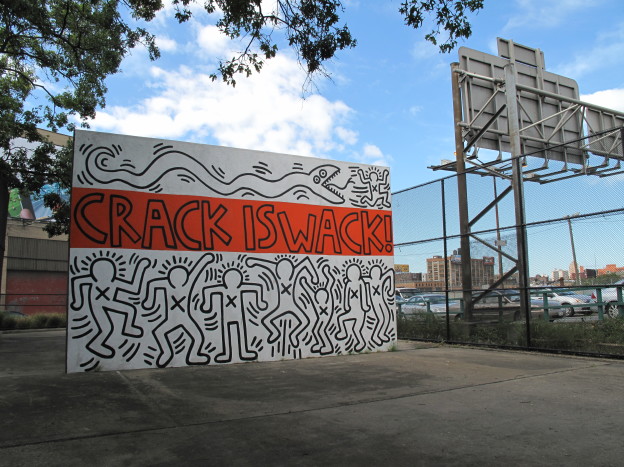
Monday, May 4 at 6:00PM:
Over its long history, East Harlem has been home to many diverse cultures, each leaving its imprint on the community. As East Harlem, most recently known as “El Barrio” or “Spanish Harlem,” transitions into becoming known as “SpaHa,” some of its touchstones are becoming endangered. Join Urban Historian Justin Ferate to view delightful architectural treasures and cultural landmarks reflecting the neighborhood’s varied histories – from recent years and from generations past. The touring material for each tour will somewhat cross over, but there are special sites unique to each tour. The tour will end with a visit to the now-famous “Crack is Whack” mural by Keith Haring.
For more information about this tour and the other STC tours click here
Monday, April 27 at 6:00PM:
Over its long history, East Harlem has been home to many diverse cultures, each leaving its imprint on the community. As East Harlem, most recently known as “El Barrio” or “Spanish Harlem,” transitions into becoming known as “SpaHa,” some of its touchstones are becoming endangered. Join Urban Historian Justin Ferate to view delightful architectural treasures and cultural landmarks reflecting the neighborhood’s varied histories – from recent years and from generations past. The touring material for each tour will somewhat cross over, but there are special sites unique to each tour. The tour will begin with views of some of East Harlem’s beloved street murals including “The Spirit of East Harlem” by Hank Prussing and Manny Vega, and will end near the 116th Street Subway Station.
For more information about this tour and the other STC tours click here
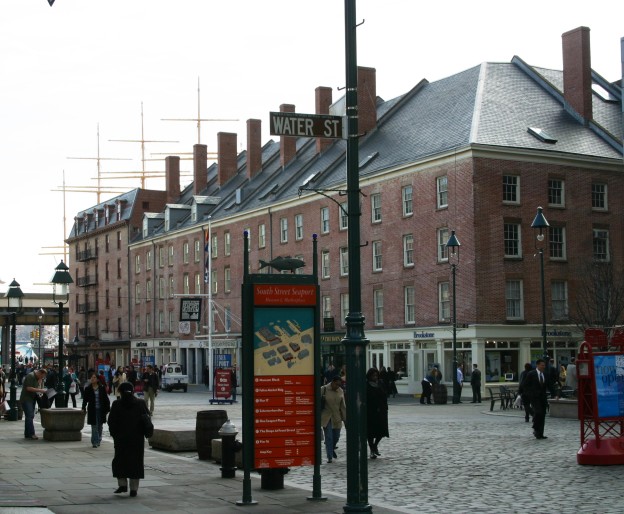
Back By Popular Demand!!!
South Street Seaport
Wednesday, August 26 at 6:00PM
As the nation’s most important port for over 100 years, the South Street Seaport, through its historic buildings, harbor views and tall ships, provides an important link to New York City’s fascinating and multi-layered origin story. As Manhattan’s oldest intact neighborhood, the Seaport derives its distinct sense of place from its 200-year old mercantile buildings, Belgian block paving and views of the Brooklyn Bridge. For many generations, it has been a destination for those with a passion for history. With major development pressures threatening to irreversibly and insensitively distort its character, advocates are working hard to protect this unique district. Join us as urban historian and author Francis Morrone illuminates the early history of the Seaport, its evolution over time and proposed plans for its future.
$10/$20
February 3: Six to Celebrate 2015 Party
LOCATION CHANGE –Calvary Church 61 Gramercy Park North
Due to the weather our original location for tonight’s party has lost heat. The new location is Calvary Church 61 Gramercy Park North the entrance is on 21st Street. Sorry for theinconvenience hope you can still join us.

Saturday, October 18, 2:00PM (WALKING TOUR)
Following the July tour of Carnegie libraries in Chinatown, John Bacon, HDC board member and Director of Planned Giving at The New York Public Library, will return to lead another tour of Carnegie libraries in Harlem and Mott Haven. In Harlem, we will visit the 115th Street and Harlem Libraries, and view the impressive Mount Morris Historic District in between. Bring your Metrocard, as we will then hop on the subway to the South Bronx to visit the beautiful Mott Haven Library and take in its notable children’s floor.
 Staten Island’s Historic Cemeteries
Staten Island’s Historic Cemeteries
Saturday, September 27, 11:00AM (TROLLEY TOUR)
SOLD OUT
Celebrate Halloween early with a visit to Staten Island’s historic places of memory and rest. Led by Lynn Rogers, executive director of the Friends of Abandoned Cemeteries of Staten Island, this trolley tour will explore three cemeteries dating to the early 19th century. Stops will include the Marine Hospital/Quarantine Station Cemetery, where thousands of Irish Famine Immigrants were reinterred in April 2014; the Staten Island/Fountain Cemetery & Native American Burial Ground, a haunted site and the city’s largest abandoned cemetery (8 acres); and Lake Cemetery, a working class cemetery where many Civil War and WWI Veterans were buried.
To find out information about the other Six to Celebrate tours click here
Madison Square North, Manhattan
Sunday, September 14, 11:00AM (WALKING TOUR)
This architecturally diverse neighborhood includes pre-Civil War rowhouses, late 19th century hotels, early 20th century loft and commercial structures, and the remaining buildings of the famous Tin Pan Alley. To better reflect the neighborhood’s boundaries, local residents and advocates have submitted a Request for Evaluation to the Landmarks Preservation Commission to expand the Madison Square North Historic District. Join us as HDC Board member and Madison Square North expert Marissa Marvelli leads a walking tour of this fascinating neighborhood.
To purchase tickets and find out information about the other Six to Celebrate tours click here

Park Avenue, Manhattan
Tuesday, June 17, 6:00PM (WALKING TOUR)
After a years-long preservation campaign by a coalition of residents, activists and community groups, 2014 is Park Avenue’s year! In February, the Landmarks Preservation Commission held an important Historic District hearing to landmark Park Avenue’s unprotected blocks, and in April, the Commission voted to landmark the district! Votes by the City Planning Commission and City Council are expected in the coming months. Join tour guide Justin Ferate on this walking tour of New York City’s premier historic boulevard and learn more about the effort to protect Park Avenue’s historical and architectural significance.
SOLD OUT
This is the second time Atlantic Avenue has come together for this kind of event. Last year was a great first time effort and we are building on that success this year. Atlantic Avenue has been Brooklyn’s primary destination for brides for years. Our merchants are experts in their field who have been designing dresses, baking cakes, and picking out fine wines for over 20 years. Now we’re bringing all of our fabulous shops under one roof at the Brooklyn Wedding Expo in the beautiful Deity Wedding Space and making ourselves known as the number one destination for weddings in Brooklyn.
Read more at bkweddingexpo.com.
Atlantic Avenue has so many wonderful shops and they are diverse. As the business organization of the neighborhood, the Atlantic Avenue BID is always looking at ways to bring businesses together. With this event, it is actually quite organic: people go to the dress store, who refers them to the neighborhood florist, cake bakery, venue and vice versa. All of these merchants have worked together and when you work with them you benefit from all of their combined valuable years of experience. For the expo, we’re letting everyone know that they too can benefit from the expertise and community that we have among our small shops. There’s lots more info online, including in-depth posts on the vendors, and people can buy their tickets there to reserve their spot: bkweddingexpo.com.
We have over 20 vendors, most of whom are within a few blocks on Atlantic and a few are selectively invited from elsewhere in Brooklyn. Deity is a great partner in this endeavor, having worked with so many great wedding merchants from this neighborhood and elsewhere.
Read more about this on Brooklyn Bride! http://bklynbrideonline.com/32511/uncategorized/brooklyn-wedding-expo/
Wednesday, January 29, 2014
6:00 PM – 8:00 PM
The LGBT Community Center
208 West 13th Street, Manhattan (between 7th and 8th Avenues)
$25 per person/ $20 Friends of HDC
RSVP required. Pay at the door or to purchase tickets in advance, go to
http://hdc.org/featured/2014-six-celebrate-launch-party or call 212-614-9107.
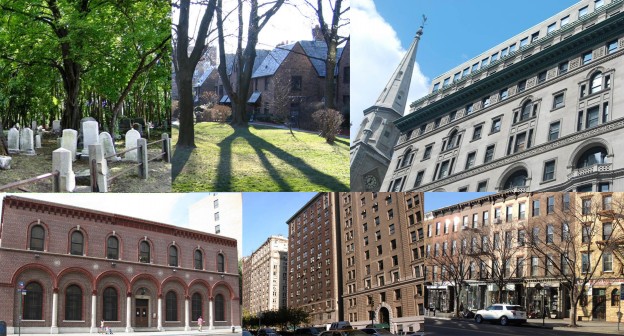
Historic Districts Council Announces
2014 Annual List of Six NYC Priority Areas Meriting Preservation
January 9, 2014
Contact: Simeon Bankoff, Executive Director
212-614-9107, sbankoff@hdc.org
The Historic Districts Council, New York’s city-wide advocate for historic buildings and neighborhoods, is pleased to announce its 2014 Six to Celebrate, an annual listing of historic New York City neighborhoods and institutions that merit preservation attention. This is New York’s only citywide list of preservation priorities coming directly from the neighborhoods. Launching in conjunction with the 2014 list is also a website for the Six to Celebrate Program, detailing all of the preservation work done in the chosen neighborhoods since the program’s inception in 2011. The website can be viewed at www.6tocelebrate.org.
The 2014 groups will be formally introduced at the Six to Celebrate Launch Party on Wednesday, January 29, 2014, 6:00-8:00pm at the LGBT Community Center (208 West 13th Street.) For tickets, visit hdc.org.
The six priority areas were chosen from applications submitted by neighborhood groups around the city on the basis of the architectural and historic merit of the area, the level of threat to the neighborhood, strength and willingness of the local advocates, and where HDC’s citywide preservation perspective and assistance could be the most meaningful. Throughout 2014, HDC will work with these neighborhood partners to set and reach preservation goals through strategic planning, advocacy, outreach, programs and building public awareness.
Starting off the year strong, on Tuesday, February 11, the proposed Park Avenue Historic District will have a Public Hearing at the Landmarks Preservation Commission. The proposed district encompasses the large sections of the iconic boulevard which are unprotected and under threat of inappropriate development. The coalition of local advocates has gathered widespread community and political support and will continue their work to ensure the designation of this historic neighborhood. HDC Executive Director, Simeon Bankoff says, “We are very excited to take such a major step for one of our Six to Celebrate groups so early in the year. We look forward to using this momentum to achieve preservation victories on Park Avenue and with our other priority groups.”
One exciting development in the program is this year’s inclusion of Public Libraries as a thematic priority. In recent years, as preservation issues surrounding libraries have become part of the public dialogue, including the Central Library Plan and the fight to save New York’s beautiful Carnegie branch libraries, the Historic Districts Council has recognized the need to call explicit attention to these institutions. This choice is not limited to a specific geographic neighborhood, era, or local advocacy group; as HDC will engage communities city-wide. Local libraries serve as community anchors and are sometimes a neighborhoods’ oldest and only surviving architecturally significant building. They serve as landmarks in the truest sense of the word. Throughout 2014, we wish to connect with new audiences and local library lovers in this effort to recognize and preserve these architecturally beautiful and culturally vital institutions.
Founded in 1971 as a coalition of community groups from New York City’s designated historic districts, the Historic Districts Council has grown to become one of the foremost citywide voices for historic preservation. Serving a network of over 500 neighborhood-based community groups in all five boroughs, HDC strives to protect, preserve and enhance New York City’s historic buildings and neighborhoods through ongoing advocacy, community development and education programs. The 2014 Six to Celebrate are:
A commercial thoroughfare for more than one hundred years, Atlantic Avenue is a diverse and varied boulevard connecting the historic neighborhoods of Boerum Hill, Brooklyn Heights and Cobble Hill. The Atlantic Avenue Business Improvement District seeks to create a shopping and dining district that celebrates its history and architecture. These efforts include educational outreach through lectures, tours and family-oriented programs, and the exploration of preservation methods to protect and enhance the elegant streetscapes that make the Avenue so enticing.
Designed in 1927 in the spirit of the garden city movement, Forest Close is a charming nook of 38 neo-Tudor houses surrounding a shared communal garden. While the Forest Close Association maintains covenants that regulate design and open space elements of the community and advises residents on design guidelines for building projects, they are now exploring other tools to better protect the area’s special character. The Association is working to engage residents and local stakeholders to promote the preservation of this lush neighborhood in Forest Hills.
Historic Cemeteries, Staten Island
Dotting Staten Island are 19 historic places of memory and rest. The Friends of Abandoned Cemeteries of Staten Island maintains the physical sites and written records of 11 of these spaces, promotes and assists in their beautification and rehabilitation, and engages local residents through events, programs and clean-ups. Friends is working to secure the resources needed to expand awareness of and participation in preserving these sites which are a vital, if little-known, part of New York City’s early history.
Madison Square North, Manhattan
This architecturally diverse neighborhood bordering midtown Manhattan includes pre-Civil War rowhouses, late 19th century hotels, early 20th century loft and commercial structures, and the remaining buildings of Tin Pan Alley. Spurred by several threats to important historic buildings, the 29th Street Neighborhood Association has recently begun a campaign to preserve this area’s rich architectural and cultural history by expanding the limited Madison Square North Historic District to better reflect the actual neighborhood.
Working with a coalition of residents, activists and community groups, Historic Park Avenue, Defenders of the Historic Upper East Side and Carnegie Hill Neighbors seek to landmark the unprotected blocks of New York’s premier historic boulevard. With an important Historic District hearing at the Landmarks Preservation Commission early in 2014, the year is off to an exciting start. This strong push to protect its historical and architectural significance includes the effort to prevent the demolition of the rectory of Park Avenue Christian Church, an architectural jewel in the Avenue’s crown.
New York City’s Public Libraries
Each of New York City’s public library branches is a neighborhood anchor, nurturing and educating residents. Crucial to their mission are the physical spaces they occupy. Often a community’s most distinguished building and only gathering place, these institutions have played an important role in the lives of generations of New Yorkers. Working with local advocates and organizations, the Historic Districts Council has chosen libraries as a thematic priority for 2014. HDC seeks to promote and preserve libraries across the five boroughs through education, outreach, advocacy and research. The project will include the completion of the Campaign to Preserve the Carnegie Libraries, a nomination of this thematic resource to the State and National Registers of Historic Places.
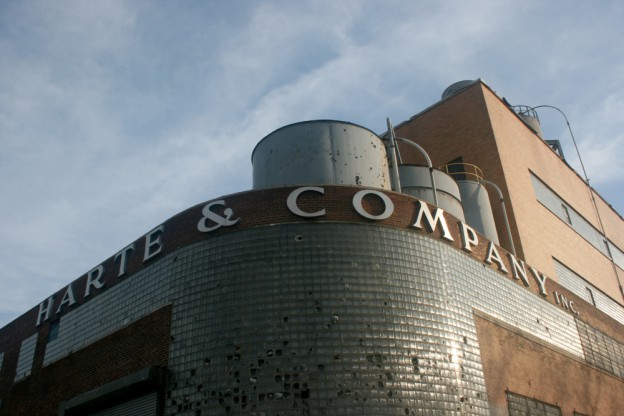
TOUR Saturday, May 11, 10:30AM